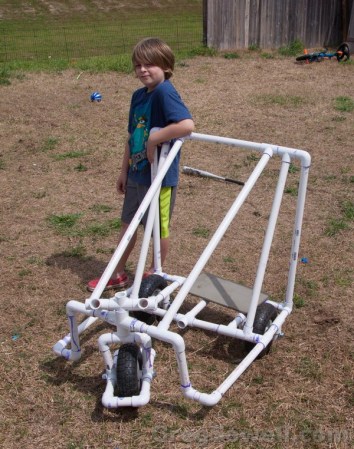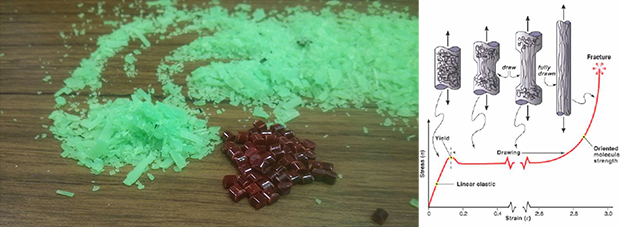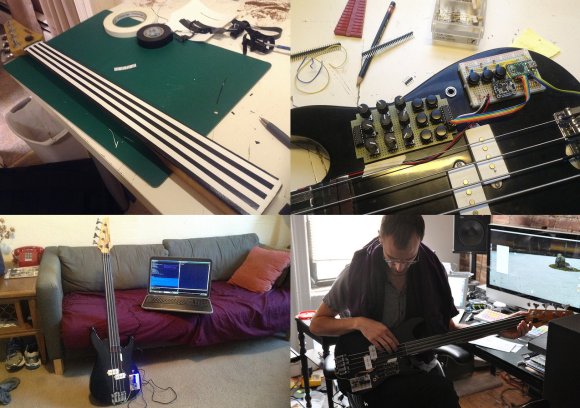
[Greg] and his kids were killing time at their (his?) favorite store — Harbor Freight. They noticed a sale on 10″ rubber tires for only $5/each… and it was all down hill from there.
He started sketching up a general idea for a three-wheeled go-kart. Once he had a reasonable idea of what it would look like, he went down to the hardware store and picked up a whole lot of 1″ PVC pipe, tees, elbows, crosses, epoxy and fasteners.
It’s a simple cart featuring a bit of a roll cage. Currently it’s just designed for being pushed around or riding down hills. It still looks like a lot of fun for the kids. We can’t help but wonder when he’s going to strap some electric motors on it to make it really fun for the kids. Maybe build a second, put some pool noodles around the frame, and bam, you’ve got a set of bumper-cars! If he needs any inspiration for the electronics, [Greg] could check out this Wireless Wii-Cart, or this over-powered-built-in-a-day-cart.
Continue reading “Cheap Tire Sale Sparks Creative Contraption”

















